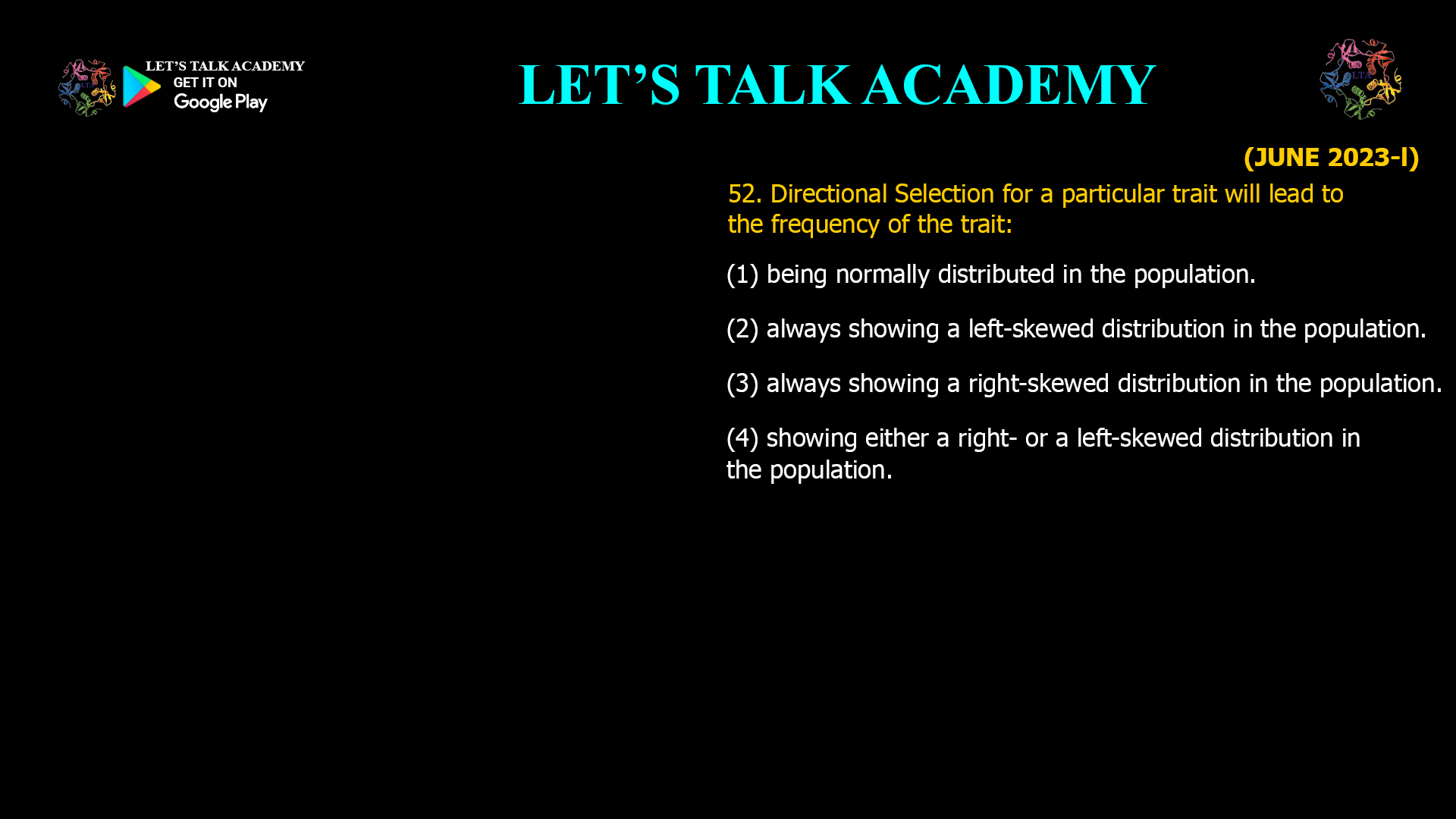- Directional Selection for a particular trait will lead to the frequency of the trait:
(1) being normally distributed in the population.
(2) always showing a left-skewed distribution in the population.
(3) always showing a right-skewed distribution in the population.
(4) showing either a right- or a left-skewed distribution in the population.What Happens to Trait Distribution Under Directional Selection?
When directional selection acts on a trait, individuals with one extreme phenotype have higher fitness and are more likely to survive and reproduce. Over time, this causes the frequency distribution of the trait to shift toward the favored extreme. Instead of maintaining a symmetrical, bell-shaped (normal) distribution, the population’s trait distribution becomes skewed—either to the right or left, depending on which extreme is favored.
Key Points from Research
-
Directional selection favors one extreme phenotype, causing the allele frequency and the mean value of the trait to shift in one direction.
-
The result is a skewed distribution: if selection favors higher values, the distribution becomes right-skewed; if it favors lower values, it becomes left-skewed.
-
The trait distribution does not remain normal; instead, it shows a pronounced tail on the side opposite the favored extreme as the population mean moves.
-
The direction of skew depends on which phenotype is being selected for: right-skewed if higher trait values are favored, left-skewed if lower values are favored.
Why Not a Normal Distribution?
A normal distribution is expected in the absence of strong selection pressures, or under stabilizing selection, where intermediate phenotypes have the highest fitness. Directional selection disrupts this balance by consistently favoring one end, causing the distribution to lose its symmetry and become skewed.
The Correct Answer
Given the options:
-
being normally distributed in the population.
-
always showing a left-skewed distribution in the population.
-
always showing a right-skewed distribution in the population.
-
showing either a right- or a left-skewed distribution in the population.
The correct answer is:
(4) showing either a right- or a left-skewed distribution in the population.
This is because the direction of skew depends on which extreme is favored by selection, and directional selection can act on either end of the trait spectrum.
Evolutionary Implications
Directional selection is a major driver of evolutionary change, enabling populations to adapt rapidly to changing environments. It can lead to significant shifts in trait means, reduced genetic diversity as less-fit phenotypes are weeded out, and even speciation over long timescales.
In summary: Directional selection pushes the trait distribution toward one extreme, resulting in a skewed (not normal) distribution that can be either right- or left-skewed, depending on which trait value is favored.
-




2 Comments
Manisha choudhary
October 5, 2025showing either a right- or a left-skewed distribution in the population.
Sonal Nagar
November 14, 2025showing either a right- or a left-skewed distribution in the population.